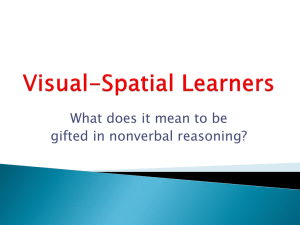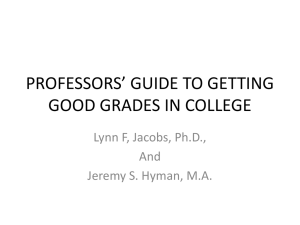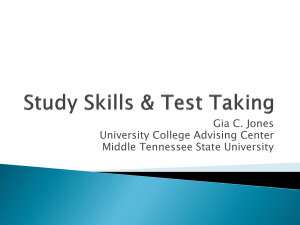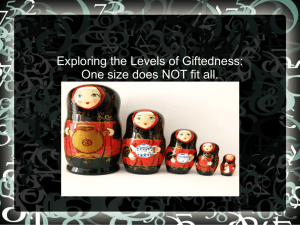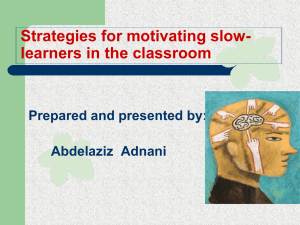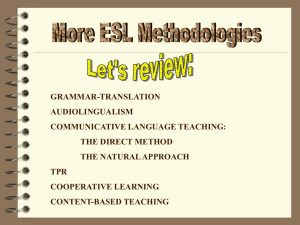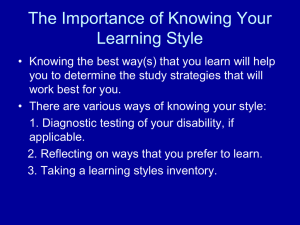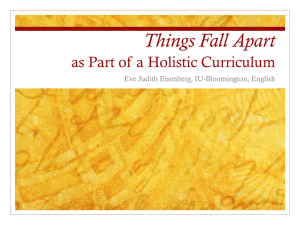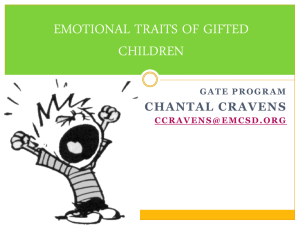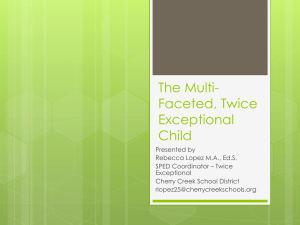The Integrated Curriculum Model for Gifted Learners
advertisement
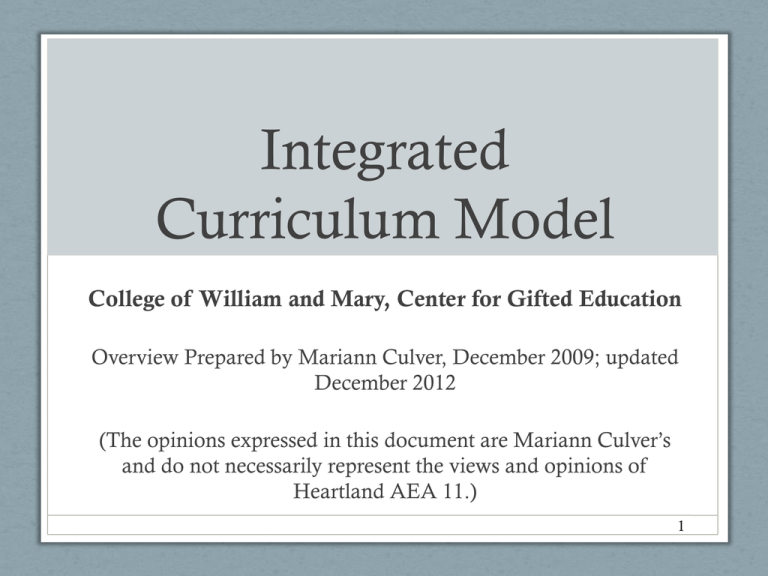
Integrated Curriculum Model College of William and Mary, Center for Gifted Education Overview Prepared by Mariann Culver, December 2009; updated December 2012 (The opinions expressed in this document are Mariann Culver’s and do not necessarily represent the views and opinions of Heartland AEA 11.) 1 Research and Theory The Integrated Curriculum Model for Gifted Learners Concepts, Issues, Themes Dimension Advanced Content Dimension ProcessProduct Dimension Source: : http://education.wm.edu/centers/cfge/curriculum/index.php (Center for Gifted Education, College of William and May 2 Research and Theory Features of Integrated Curriculum Model • • • • Change Systems Patterns Cause & Effect • In-depth • Advanced Reading • Primary Sources • Advanced Skills • Elements of Reasoning • Research • Problembased Learning • Inquiry Skills Source: : http://education.wm.edu/centers/cfge/curriculum/index.php 3 Research and Theory What Works highlights 20 years of research on curriculum development, instruction, assessment and professional development. Download this free document: education.wm.edu/centers/cfge/curriculu m/documents/WhatWorks.pdf 4 Research and Theory General findings from What Works: 20 Years of Curriculum Development and Research for Advanced Learners • The process used for curriculum development matters. The process includes: • Review of research on topic. • Draft lessons piloted in classrooms, then revised. • Unit is piloted in classrooms, then revised. • Units are field-tested at multiple sites, then revised. 5 Research and Theory General findings from What Works: 20 Years of Curriculum Development and Research for Advanced Learners • Student learning is enhanced when students experience teaching and learning models repeatedly and consistently. • Students internalize processes and models. • Student thinking becomes more automatic. • Models include: Paul’s Reasoning Model, Persuasive Writing Model, Literature Web, Vocabulary Web, Analyzing Primary Sources, and Research Model. 6 Research and Theory General findings from What Works: 20 Years of Curriculum Development and Research for Advanced Learners • All learners benefit from high-level curriculum. • Non-gifted learners would need appropriate differentiation, scaffolding, and flexible grouping techniques. • Learners from all socioeconomic backgrounds and ethnicities show significant growth in academic areas. 7 Research and Theory General findings from What Works: 20 Years of Curriculum Development and Research for Advanced Learners • Curriculum-Based Assessments measure the authentic learning within the William and Mary curriculum units. • Pre- and Post-assessments are matched to content and skills in the units and can be used diagnostically as well as to measure growth. • Lessons contain assessments of content, concept, and processes. 8 Language Arts Framework Source: What Works: 20 Years of Curriculum Development and Research for Advanced Learners (2008). Center for Gifted Education, College of William and Mary, p. 16. 9 Navigator Novel Studies • Navigators Novel Studies encourage analysis and interpretation of literature, using a specific novel, through structured questions and activities. Some activities are consistent across Navigators. • Students explore themes, literary elements and real world connections within the books. • Students can be grouped for instruction or use them independently (with prerequisite knowledge of the teaching models). 10 Navigator Novel Studies • Research activities reinforce the process-product dimension of the Integrated Curriculum Model. • The persuasive writing activities incorporate interdisciplinary activities and/or research, with at least one connected to nonfiction prompts. • In many of the Navigators reviewed, there are creative writing components. • There are 55 Navigators (grades 1-12). 6 are available for free download (grades 2-11) at http://education.wm.edu/centers/cfge/curriculum/languagearts/materia ls/navigators/index.php 11 Spatial Reasoning Grade 6-8 • Students explore one-, two-, and three-dimensional tasks, the transition between dimensions, and representations of 3-dimensional objects in 2 dimensions. • One lesson has a connection to literature. The teacher reads the book, Flatland by Edwin Abbott to the students. Students read the book, A Wrinkle in Time by Madeleine L’Engle as an extension activity. 12 Spatial Reasoning Grade 6-8 • There are Internet resources provided. For example, using Legos for 3-dimensional activities, drawing 3-dimensional shapes, and playing games. • There are 2 units on spatial reasoning. One for grades 2 – 4 and one for grades 6 – 8. • Additional resources: there is a unit on place value and the representation of numbers suitable for grades 3 – 6; as well as links to competitions and games . http://education.wm.edu/centers/cfge/curriculum/ mathematics/games/index.php 13 Science Framework Source: What Works: 20 Years of Curriculum Development and Research for Advanced Learners (2008). Center for Gifted Education, College of William and Mary, p. 12. 14 Electricity City Grades 4-6 • The unit’s foci are understanding systems, understanding the nature and properties of electricity, understanding and applying the principles of experimental design, and developing reasoning skills. • Students learn through a problem-based, real-world scenario. In the scenario, students are newly hired employees for a local power company. They are part of a team that will be responsible for assuring that electricity requirements are met for a new recreation complex for the community. 15 Electricity City Grades 4-6 • Materials used in the activities are real-world, such as batteries, light bulbs, circuit tester, insulated wire, and building blueprints. • Cross-curricular suggestions are incorporated such as persuasive writing, converting amps/volts/watts, scale drawing, and the effects of loss of electricity during hurricanes such as Katrina and Rita. • There are 16 science units available on a variety of topics for grades K – 8. 16 Social Studies Framework Source: What Works: 20 Years of Curriculum Development and Research for Advanced Learners (2008). Center for Gifted Education, College of William and Mary, p. 14. 17 The Road to the White House Grades 6-8 • The Road to the White House: Electing the American President introduces the concept of systems through historical periods and events. • The unit’s foci are understanding systems and representational democracy, as well as developing reasoning skills, interpersonal and social group process skills, and historical analysis skills. 18 The Road to the White House Grades 6-8 • Students participate in a three-part campaign simulation. They assume the roles of members of a campaign team and journalists. The campaign team creates their platform statement and candidate speech, holds a convention with banners, buttons, etc. Journalists write articles, interview candidates, and draw political cartoons. An election is held and inaugural addresses are given. 19 The Road to the White House Grades 6-8 • Primary source materials are reprinted within this unit for students. For example, articles written after the American Revolution, national platforms from the Democrats and Republicans in 2000, Jimmy Carter’s inaugural address in 1977, Ronald Reagan’s inaugural address in 1981, etc. • There are 9 social studies units available on various topics for grades 2 – 10. 20 Online Resources • The Center for Gifted Education has a comprehensive website. The curriculum pages contain information and additional online resources for each content area, the Teaching Models, and frequently asked questions. See the document: Overview WM curric. • Each curriculum unit provides online resources for teachers and students. For example, there are links to background information, student activities, instructional support materials, content area research, etc. 21 Online Resources • Curriculum units are disseminated through one of the following three places: • Center for Gifted Education (click on “purchase”, http://education.wm.edu/centers/cfge/curriculum/languag earts/materials/navigators/index.php • Also, a blog with up-to-date information on curriculum is at http://curriculumcorner.blogs.wm.edu/ • Kendall/Hunt Publishing Company, http://www.kendallhunt.com • Prufrock Press, http://www.prufrock.com 22
